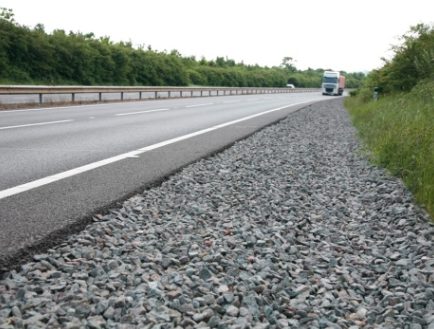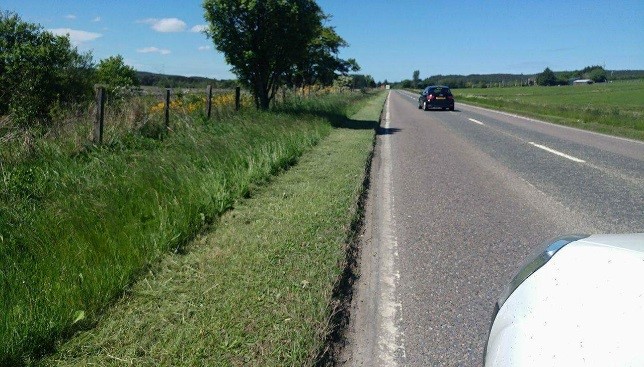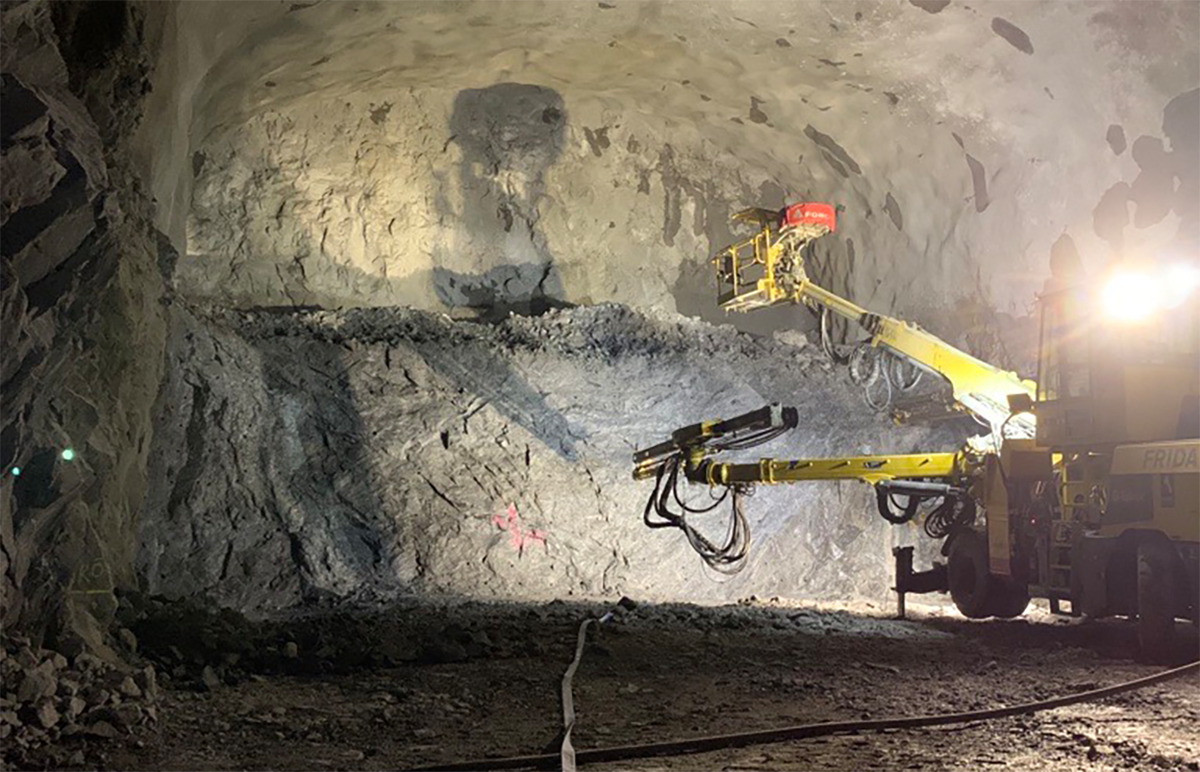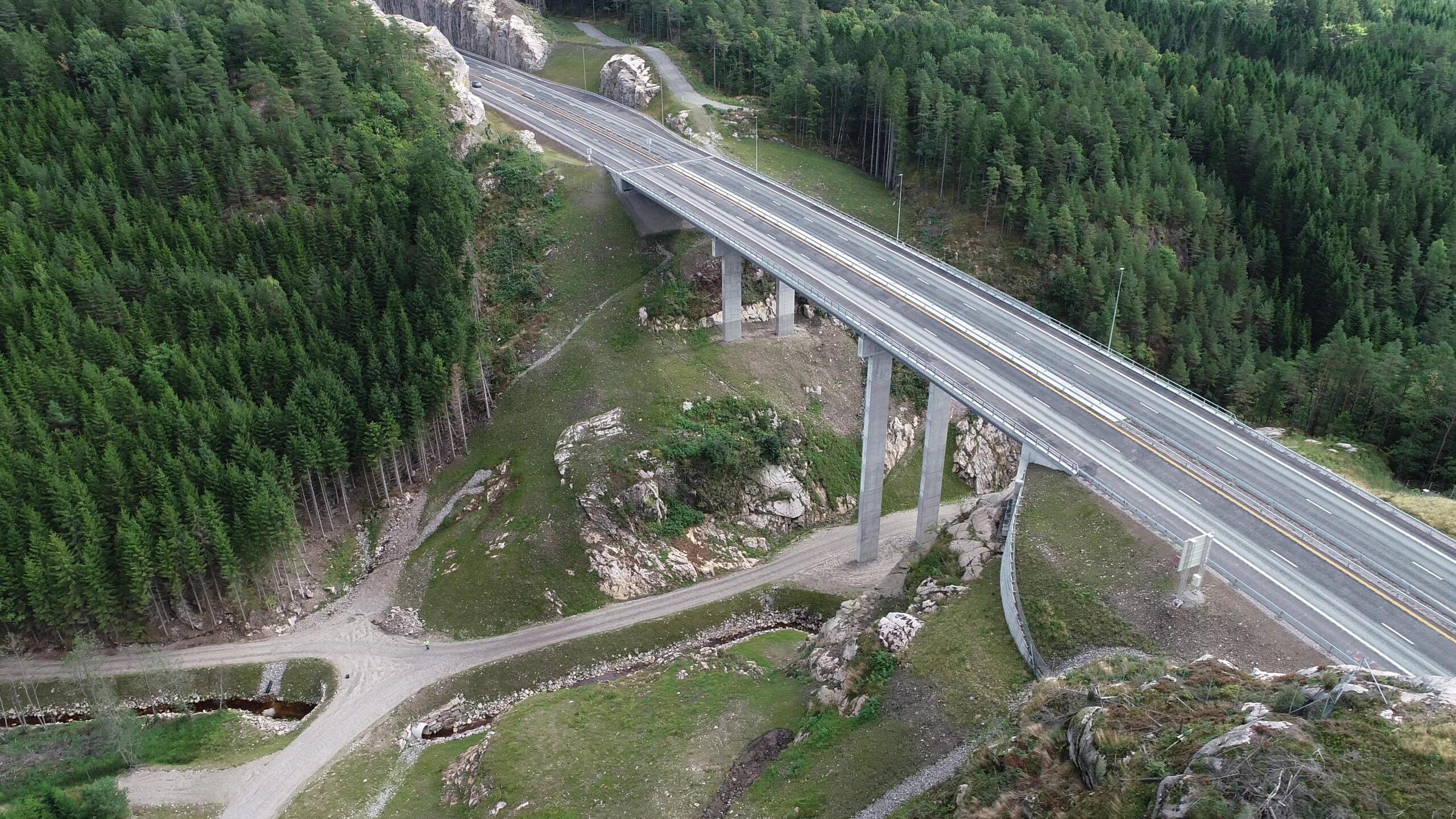CEEQUAL Term Contract (78.8% for 2018/19) – Whole Team Award
Version 5, November 2019 | Perth, Scotland
Assessor: Craig Thom, BEAR Scotland Ltd
Client: Transport Scotland
Designer: BEAR Scotland Ltd
Contractor: BEAR Scotland Ltd
Project Summary
The trunk road network which connects Scotland’s cities, towns, airports and ports is overseen by Transport Scotland. BEAR Scotland have maintained the Trunk Road network in the North East Unit since 2001 and were awarded the 4G contract in 2014. With a total length of 594 km, the North East Unit extends from Halbeath in Fife up to Fraserburgh and across to Inverness.
Transport Scotland as an Executive Agency help the Scottish Government meet the objectives they set for a more sustainable future. This includes encouraging the Trunk Road Operating companies to make sure they work as closely as possible with the communities they serve, maximising community benefits, and encouraging innovation. This environment is fostered through the requirements set out in the 4th generation contract but also and perhaps more importantly through active partnership between the wider team, client and contractor.
Through this close working relationship, BEAR Scotland and Transport Scotland can deliver the service that the communities of the north of Scotland expect. This partnership helps to deliver better value for money and supports the trunk road networks ability to adapt to future challenges.
This 4th Generation term contract has been built on good practice across the industry and has evolved and been refined during the previous generations of the contract. In 2016 BEAR Scotland committed to commence the CEEQUAL process, pursuing a Whole Team award in conjunction with Transport Scotland.
Services being provided by BEAR Scotland under the term contract include road and bridge maintenance, minor improvements, incident management and support, lighting the network and minimising the risk of landslides.
The following work types were considered in detail during the 2018/19 CEEQUAL assessment in the North East Unit:
• Roads Planned Maintenance
• Drainage Maintenance
• Road lighting
The following sections outline examples of best practice with regards to sustainability identified during the initial verification assessment period.

Contract Management
Schedule 5 Part 8 and the 4G procurement strategy and project execution plan identified from the outset that the sustainable road maintenance, carbon emission reduction and environmental protection were the key aims of the 4G contracts based on the Scottish Governments targets. Schedule 5 Part 8 of the contract outlines the sustainable development-based contract strategy. BEAR Scotland comply with this and are subjected to regular audits to check compliance. In addition to this the 4G North East Trunk Road Network is subject to a number of environmental management system audits from the Performance Audit Group who are employed by Transport Scotland as well as Lloyds Register, an external certification body.
A good level of performance was achieved in all North East audits with continuous improvement being demonstrated in the audit reports and BEAR Scotland maintaining certification to the ISO 14001 standard.

Relations with the Local Community
BEAR Scotland is keen to support local communities and promote community benefits that support Transport Scotland in delivering the objectives stated in the Scottish Government’s Scotland’s Transport Future and the UK Government’s Get Britain Working Policies. Throughout the verification assessment period BEAR Scotland carried out a number of community initiatives and engagement projects with schools, colleges and universities as well as developing young people within the Unit in accordance with the Scottish Government’s Creating Opportunities Together document.
Examples of this work includes fundraising events for charities including Cash for Kids, SAMH – Scottish Association for Mental Health, Macmillan Cancer Support and Movember. Over the period BEAR Scotland employees mentored school pupils in the Go4SET challenge, a STEM (Science, Technology, Engineering and Mathematics) subject challenge and the ICE: Bridges to Schools initiative.
A number of school visits were undertaken across the network to deliver presentations on winter maintenance activities and invite pupils to take part in a competition to name a gritter. During 2018-19 BEAR Scotland supported the Sporting Memories Foundation Scotland which aims to tackle dementia, depression and loneliness through the power of sport as well as Keep Scotland Beautiful and local community groups.


Drainage Maintenance
M90 Kelty Northbound Drainage
Drainage improvement works were undertaken on the Northbound M90 at Kelty. These works were required to be undertaken in compliance with BEAR Procedure 112 – SUDS Feature Maintenance Operations which was agreed with SEPA. The procedure allows the application of a Paragraph 25 Waste Management Licence Exemption which permits the reuse of the arisings on site. The use of this procedure allows a sustainable solution which both reduces the volume of waste going to landfill and transport associated emissions which are generated as a result whilst meeting the requirements of the Waste Management Licensing (Scotland) Regulations 2011.
During the works several toads were identified in the ditch. The Chargehand contacted the BEAR Scotland Environmental Team in line with the Site Environmental Management Plan requirements and the decision was taken to cease all excavation activities and postpone works until the hibernation period was over. An ecological site appraisal was undertaken at the end of the toad hibernation period which determined that the toads were no longer present and the works were completed.
Filter Drain Materials Testing
BEAR Scotland are responsible for maintaining roadside filter drains on the Trunk Road network. The material used in the filter drain construction consists of a ‘Type B’ grade of granular fill which over time can become clogged with road-deposited-sediment (RDS) which has been washed into the filter drain via runoff from the road.
Road runoff is recognised as one of the most important sources of diffuse pollution of surface waters, sediments and soils. Many of the pollutants in road runoff adhere to suspended solids which end up in filter drains and over time lead to the filter drain becoming clogged. The Type B granular filter drain material, including the RDS is required to be removed from each location as waste.
Waste management legislation requires BEAR Scotland to classify the waste the business produces before it is collected, disposed of or recovered. In order to meet this requirement, testing in accordance with SEPA Technical Guidance WM3, Guidance on the Classification and Assessment of Waste (1st edition 2015) must be undertaken to determine if the waste is hazardous or not before Waste Acceptance Criteria (WAC) testing is undertaken. This requires the chemical testing of the material to assess whether it may contain any hazardous properties, and therefore determine the most appropriate route for disposal.
A procedure which provides guidance to Designers and ensures compliance with Section 34 of the Environmental Protection Act 1990 and The Environmental Protection (Duty of Care) (Scotland) 2014 Regulations has been created and has been implemented in the business management system.
Simon Moos – Gully Waste Dewatering Plant
BEAR Scotland have continued to utilise the Simon Moos dewatering plant throughout the assessment period. The plant operates between four sites across the business (Corpach and Kingussie, Cunmont and Stirlinghill). The treatment process involves the use of polymer to cause flocculation of the contaminants present in the gully waste, leaving behind dewatered sludge alongside clean water which can be used again in the gully tankers, as well as vehicle washing. In addition to this the system also allows for a reduction in transport related carbon emissions as the gully tankers have less distance to travel back to the strategically positioned depots.


Road Lighting
LED refurbishment works have continued across the North East Trunk Road network with 1850 LED lanterns being installed in place of standard lanterns on 5 routes across the network during the reporting period. Numbers installed in each route are detailed in the table below.

LED lanterns have a number of benefits including:
- Reduced energy consumption with an energy saving potential of 40% compared to high pressure sodium lanterns;
- A long and predictable lifetime, reducing maintenance requirements;
- They do not contain harmful substances such as mercury; and
- Improved light levels which improves safety and enhances use ability for vulnerable members of the community.A whole life costing exercise was undertaken in advance of the LED refurbishment program which compared the use of high-pressure sodium lanterns against LED’s which justifies the cost and energy savings.
Opportunities for Renewable/Low Carbon/Zero-Carbon Energy
Throughout the assessment period solar powered street lighting furniture continued to be installed on the network. This technology was brought to attention at lighting professionals’ seminars and allows the use of renewable energy to power street lighting furniture on the network. The technology uses solar power to trickle charge units powering 12-volt batteries to illuminate internal LED’s thus eliminating the requirement for mains power. The use of LED’s in this technology produces savings on maintenance and bulk lamp change. This technology is approved by the Department of Transport and can therefore be used on the Trunk Road Network.


Roads Planned Maintenance
Environmental/Sustainability Assessment Scoring Matrix
The Transport Scotland’s annual process for roads structural maintenance includes an environmental/sustainability assessment scoring matrix which is used in the Roads Structural Maintenance value for money programming process. This ensures that key environmental and social criteria are considered during this process and factored into the programming of schemes each year.

A90 Bridge of Muchalls Embankment Reinstatement
During the reporting period embankment reinstatement works were undertaken on the A90 at Bridge of Muchalls. The scheme location is within the Muchalls Conservation Area and the Burn of Muchalls which is culverted beneath the A90 at the scheme location is classified by SEPA under the Water Framework Directive therefore environmental mitigation measures were implemented.
Two protected mammal and non-native invasive flowering plant species surveys were carried out on-site prior to commencement of works.

Trenches and other voids (>0.5 m deep) which might trap mammals were covered overnight and pipe ends were capped. Wooden ramps were placed in any excavations during construction with potential to trap animals to allow easy escape. Open trenches were checked each day for entrapments. During construction, free passage for wildlife was maintained along the banks of the Burn of Muchalls.
Silt fencing was installed as a barrier to contain silt in runoff flowing to the Burn of Muchalls. Soil stripping operations were carried out in two sections to avoid bare earth being exposed for long periods of time. This helped to minimise the risk of runoff and silt getting into the Burn of Muchalls. If sustained heavy rainfall (e.g. >10 mm in 24 hours) occurred during soil stripping operations, the work was suspended and not restarted until the ground had at least a full dry day.
The permanent earthworks involved an initial topsoil strip, where the topsoil will be temporarily stockpiled on site, in a sealed bund, for later reinstatement upon completion of the works.

Inspection of all erosion controls was undertaken daily and after rainfall events, and erosion control devices were maintained, inspected and cleaned of silt as necessary. Silt management features were constructed prior to, or at the same time, as the construction of the works. Silt management measures were inspected periodically to ensure that they have not been removed, damaged or interfered with and they will be cleaned of silt as necessary. If it was identified that the fencing and/or bunds were not up to standard, the works did not commence until they were reinstated to the condition that they were originally in.
All operatives were fully briefed in silt management procedures and briefed on their responsibilities through the delivery of a silt management ‘Toolbox Talk’ prior to works commencing onsite.
When tracking two excavators over the Burn of Muchalls, General Binding Rule (GBR) 9 was complied with and suitable sediment management measures (hay bales, oil booms and silt fencing) were implemented downstream from the crossing point.
The works also presented opportunities for the implementation of a number of enhancement measures including where agricultural grassland was to be reinstated and/or re-graded, a seed mixture suitable for agricultural land was utilised, including Perennial Ryegrass varieties, in conjunction with an application of fertiliser to the seed manufacturer’s recommendations.
If damage to road verge occurred, this was lightly cultivated or graded (upon completion of the works) to allow natural recolonization by local species and promote integration with existing landscape character.
The ecological walkover surveys confirmed that native rosebay willowherb had become the dominant plant species, to the detriment of all other plant species within the works footprint. Clearance of Rosebay willowherb during the embankment earthworks therefore supported an ecological objective in expanding the opportunity for more varied habitat which would contribute to local biodiversity.
Operational impacts include safer and more enjoyable pedestrian and cycling journeys on the existing footway due to more stable and secure footing.


A92 Freuchie Services Footpath Scheme
During the reporting period a scheme was undertaken on a footpath at Freuchie Services on the A92. The existing footpath at this location was not wide enough for two side by side wheelchair users. A key consideration during the design of this scheme was improving the level of performance for wheelchair users and remove the barriers to accessibility that the existing footpath presented. The scheme involved the widening and resurfacing of the footpath which has provided enhancements for both able bodied and vulnerable members of the community by providing more space and a better running surface.

M90 Maintenance Works
The phased roads structural maintenance schemes on the M90 continued during the reporting period. A reduced treatment strategy was selected rather than complete reconstruction. This reduced costs which allowed more work to be undertaken. The chosen treatment method involves the use of crack and seat. Crack and Seat is a technique where an existing concrete slab is cracked at controlled centres to create discrete mini slabs. These slabs are then rolled with a 10 or 20 tonne pneumatic tyred roller to seat them into the existing granular base. This creates a sound foundation for a flexible overlay preventing reflective cracking of the new surface. By Cracking & Seating the existing concrete bound mixture the requirement to remove the full depth of the pavement was avoided, thereby reducing the quantity of virgin material used in the operation. This also has the additional benefit of reducing transport associated emissions with less material being transported to site.
The use of this treatment method allows the work to be undertaken over a relatively short space of time in comparison to other treatment methods, therefore reducing the time spent on site and associated social disruption. The new pavement surface has a smoother running surface compared to the previous concrete surface which reduces the noise generated by vehicles using the road, reducing disruption to the local residents.
The use of this treatment method allows the work to be undertaken over a relatively short space of time in comparison to other treatment methods, therefore reducing the time spent on site and associated social disruption. The new pavement surface has a smoother running surface compared to the previous concrete surface which reduces the noise generated by vehicles using the road, reducing disruption to the local residents.
TS2010 (SMA Mix)
TS2010 (Stone Mastic Asphalt Mix) was the main material used in roads planned maintenance schemes undertaken during the Assessment Period. TS2010 has the following benefits:
- Superior durability
- Lower noise levels
- Good skid resistance
- Decreased lifetime costs
- Thin layer application
- Excellent ride quality
- Reduced use of expensive imported aggregates
- Increased use of a wider range of sustainable aggregate sources
Utilising this material allows the mitigation of noise impacts on residential receptors during the operation of the road.

Network Wide Biodiversity Enhancements
Directional grass cutting to encourage wildlife to move to areas that are not subject to impact from grass cutting operations have been undertaken across the network throughout the reporting period. In addition to this, the use of log pile installations at various locations has also been used to create wildlife habitat areas across the network.
Works to contain the spread of invasive species including Japanese knotweed and giant hogweed across the network have also continued throughout the reporting period.

Future Improvement Opportunities
The main future improvement opportunity being implemented is the development of a system to ensure that on-site environmental mitigation is successful and fully implemented and recorded. The Environmental Team have produced a checklist which can be used by construction teams to ensure that the site-specific mitigation measures outlined in the Site Environmental Management Plan are established and are effective for the duration of the works. The developed procedure will ensure clarity with regards to the process, and the mechanism will be fully integrated into the business management system.
Most of BEAR Scotland’s work is to maintain the existing Trunk Road Network. As a result of undertaking the CEEQUAL verification process the intention is to improve the design process to allow the consideration and implementation of environmental enhancements within projects. Such improvements could involve enriching local habitats or improving the landscape within high amenity-value areas. This would involve working with Transport Scotland, including the assessment of the local environment and research of potential enhancements by the Environmental Team, agreement of feasibility with designers once site-specific parameters have been identified and incorporation into the final designs.

CEEQUAL insights and case studies
Browse the latest insights, thinking and case studies from CEEQUAL

Stockholm Metro Nacka project awarded Excellent

Stockholm Metro Sofia access tunnel a BREEAM Infrastructure success

Stockholm Extended Metro access tunnel Sundstabacken achieves CEEQUAL Excellent rating

Preparatory works for the new water treatment system in Oslo achieves BREEAM Infrastructure Excellent rating

E39 Mandal øst – Mandal


